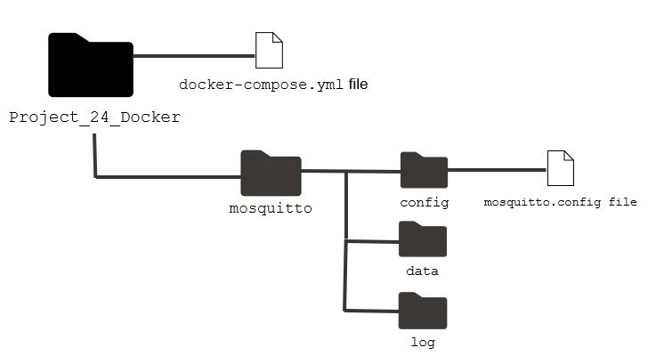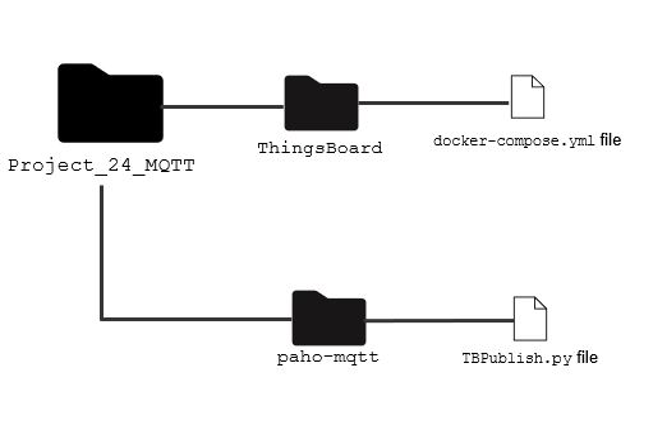- MQTT: Message Queuing Telemetry Transport used to handle sensor data
- MQTT protocol (implemented by Mosquitto ): Designed as an extremely lightweight publish/subscribe messaging transport, it is useful for connections with remote locations where a small code footprint is required and/or network bandwidth is at a premium.
- MQTT Broker is responsible for receiving network connections from the client and handling the client’s requests of
Subscribe/Unsubscribe and Publish, as well as forwarding the messages published by the client to other subscribers.

An "open source platform that allows for the development, implementation, and testing of input and output data from IoT devices." thingsboard.io
- Device management
- Data collection
- Processing and Visualization for IoT
- Devices
- Assets
- Rule Engine
- Root Rule Chain
- Run the
docker-compose upcommand from within the parent folder. - Install the Paho MQTT Python client library locally by running
pip install paho-mqttin the terminal. - Inside of your home folder, create two folders named
.mytb-dataand.mytb-logs.
- Values for temperature and humidity will start appearing after running the
TBPublish.pyfile in VS Code.Temperature: 25 humidity: 95 Temperature: 81 humidity: 58 Temperature: 39 humidity: 69 Temperature: 30 humidity: 54 Temperature: 50 humidity: 71 Temperature: 70 humidity: 92 Temperature: 98 humidity: 54 - In a browser window, navigate to http://localhost:8080/. Log in to ThingsBoard using the default tenant administrator account:
Login: tenant@thingsboard.org Password: tenant
- Open the
DHT11 Demo Deviceby selecting it from the menu on the left. Navigate to the Latest Telemetry tab to see the latest telemetry.
- Create a project in Firebase then add a field in the database titled
temperatureand initialize the corresponding field to zero. - Create a
Firebase node, connect it to aMessage Type Switchnode, and addPost telemetryas the link label.
- Realtime database updates will appear in ThingsBoard and publish temperature and humidity data.

Sending information about the streaming MQTT data that is above a certain threshold to Firebase.
alarmfield publishes the live streaming data from the CreateAndClearAlarm rule chain.temperaturefield publishes temperature and humidity data.





